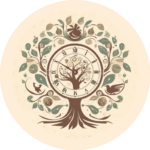‘…Not far from the Baia castle, at the bottom of the hills, there is a bath, which Neapolitan people call ‘the bath that makes women pregnant’ since it is the opinion of many that, if infertile women bathe there, they will conceive’
This was written by one of my favourite historical characters, the ever-charming surgeon often accused of being a charlatan, Leonardo Fioravanti. But hold on, because here’s another juicy 16th-century quote:
‘Who wants his lady to get pregnant, send her to the baths and do not go along’
Hmmm… Intriguing, right? This was actually a popular proverb that writer Michel de Montaigne heard from locals while travelling through Italy. So, what exactly was going on in these baths? Let’s dive in and find out, shall we? (I promise that’s my first and last water pun… well, maybe not my last!)
A Quick Dip Into Bathing History
Before we plunge into the Renaissance (ok, I clearly lied about the puns), let’s get our toes wet with some background. Hydrotherapy, or healing with water, goes way back. Ancient Egyptians had royalty bathing in oils and flowers for their health – think Cleopatra and her legendary beauty routines. The Greeks were big fans too, with Hippocrates himself recommending spring waters for various ailments.
Then the Romans took it to a whole new level with their massive public baths or thermae. These weren’t just places to get clean – they were social hubs where you could exercise, relax, gossip, and even do business deals while getting a good soak. The Baths of Caracalla in Rome could hold 1,600 bathers at once!
And it wasn’t just a European thing! In Japan, people have been using natural hot springs (onsen) for centuries. Even during the European Middle Ages when public bathing became less popular (and NO, medieval people weren’t dirty – that’s a myth!), people were still finding ways to keep clean.
But when the Renaissance hit, with its obsession with all things classical, bathing for health came roaring back into fashion. And that brings us to our pregnant ladies and their mysterious baths…
Renaissance Splashes
When you think “Renaissance,” what comes to mind? Beautiful Botticelli paintings? Michelangelo’s David? Well, add “doctors arguing about bathing” to that list!
During this period, medicine was in a fascinating state of flux. Imagine being a doctor trying to juggle respect for ancient authorities like Galen while also dealing with new empirical evidence and folk remedies that actually seemed to work. It’s like trying to update your phone while simultaneously reading the user manual for a gramophone – challenging, to say the least!
The medical world ran on humoral theory – remember that business about balancing your four bodily fluids? If you were too “hot and dry,” you needed something “cold and moist” to balance you out. It sounds weird to us now, but this was orthodox medicine back then!

So how did mineral baths fit into this? Well, that was the problem – they didn’t, really. The ancient authorities hadn’t written too much about them, which left 16th-century doctors in a bit of a pickle. If Galen hadn’t approved it, could it really be good medicine? But these mineral springs were becoming all the rage, and doctors couldn’t ignore them.
Some physicians worried that hot baths might “overly weaken the body or heart” in frail people, or dangerously “stir up humours” (whatever that means – I imagine humours swirling around like a washing machine on spin cycle). Pregnant women, the elderly, and people with certain conditions were advised to avoid these baths.
To make matters worse, many of these water cures came from folk traditions. It’s even said that the physician and university professor Gabriele Falloppia (yes, the “Fallopian tubes” guy) told the tale of how a sick cow accidentally discovered a healing spring called Aqua Brandola in 1448… And the cow was cured, apparently! Not exactly the sort of rigorous testing we’d expect today! “Well, the cow seemed to feel better, so…”
Diving Into Bathing and Medicine
Renaissance humanists had a bit of an authority problem. Unlike today’s scientists who get excited about new discoveries, most of these scholars thought that if Hippocrates and Galen hadn’t mentioned it, it probably wasn’t important, or even true. So what to do about these popular mineral baths that ancient texts barely mentioned?
The solution was clever: in 1553, Venetian publisher Tommaso Giunta produced a massive 500-page book called “De balneis omnia quae extant,” which basically means “Everything That Exists About Baths.” This scholarly tome collected every tiny reference to medicinal waters from Greek, Roman, and Arabic sources that could be found, essentially saying, “See? The ancients DID talk about baths! We just… had to look really, really hard to find it.” There were even drawings of ancient Roman baths included, making the case that bath culture was a classical tradition we should revive.
And then the Pope’s doctor decided to join the discussion. In 1571, the Pope’s personal physician, Andrea Bacci, published “De Thermis,” ‘On Baths’, basically arguing that mineral baths were scientifically sound according to Galenic principles. Bacci surveyed “all the spas” of the then-known world and insisted that only proper doctors should supervise bathing therapy. Reading between the lines, what he’s really saying is: “These baths might have been discovered by peasants and cows, but only WE educated physicians truly understand how they work! So pay us, not those local herbalists who’ve been running these springs for generations!”


This was part of a broader turf war between learned medicine and popular medicine. Academic doctors were essentially trying to take over spa therapy by writing fancy Latin treatises that common folk couldn’t read. Classic gatekeeping, Renaissance-style!
So what did these Renaissance doctors think was happening when you took a dip? According to their theories, the heat from the water would open your skin pores, allowing “excessive or corrupted humours” to be expelled, while also letting beneficial minerals enter your body. Sulphurous waters, which must have smelled like rotten eggs, were thought to dry up excess moisture and treat skin conditions. This made sense in Galenic logic since sulphur was considered to have a “hot” quality. Other mineral waters could be drunk as laxatives or diuretics to flush out “internal obstructions.” Remember, this was all before modern chemistry. Doctors categorised baths based on observed effects and then retrofitted these observations into their humoral framework. But not everyone was buying into this logic.
Paracelsus Makes Waves
Now let’s meet the bad boy of Renaissance medicine – Paracelsus! This Swiss-German physician-alchemist was openly against traditional authorities and proposed radical new ideas that, as it’s often the case, horrified the establishment. Paracelsus basically said, “Humoral theory? Rubbish! Disease isn’t an imbalance – it’s a foreign invader we need to kick out!” As an alchemist, he believed that the power of mineral springs came from their chemical components. In his view, water was the “matrix” where metals and salts grew by God’s design, making each spring a natural alchemical brew combining water, earth, and heat.


While Italian doctors were trying to justify baths using ancient texts, Paracelsus couldn’t care less what Galen thought. “Does it work? Great! Who cares if some Roman physician 1300 years ago approved it or not?” His approach was boldly experimental. In 1535, he visited remote hot springs in Switzerland and was so impressed that he wrote a whole booklet about them. He recommended that patients bathe for up to 12 HOURS A DAY in warm water, for SEVERAL DAYS straight! These people must have looked like human raisins! But apparently, his methods worked for conditions like paralysis and rheumatic pain. Paracelsus even sparked an early form of extreme spa tourism – patients were being lowered down cliffs in baskets to reach thermal pools below! Talk about dedication to wellness!
So we’ve got two competing approaches: the Italian doctors trying to fit bathing into traditional medicine, and Paracelsus throwing tradition out the window. It’s like a 16th-century version of conventional medicine versus alternative therapies! The Italians were cautious, using healing waters as part of a balanced treatment plan that included diet and exercise to restore overall humoral balance. Paracelsus was more aggressive, targeting specific diseases with specific mineral waters based on their chemical properties.
While the traditionalists viewed Paracelsus with suspicion, he had fans among less conventional practitioners – including our friend from the beginning, Leonardo Fioravanti, who loved strong remedies and getting the body to “purge” whatever was ailing it. Over time, these approaches would gradually merge. By the 17th century, Paracelsian chemistry was increasingly influencing mainstream medicine, and spa therapies began to be explained in chemical terms rather than purely humoral ones. The heated academic debates cooled as doctors came to see mineral waters as simply another tool in their medical arsenal. But by then bathing and visiting springs had become more than taking care of your health. Let’s talk about what else was going on in these baths.
Renaissance Bathing Culture
Now, let’s get to the juicy bit you’ve been waiting for! Remember that quote from Montaigne about sending your wife to the baths but not going along? Here’s where we find out what that was all about! Contemporary observers noted that the usual moral rules were somewhat… flexible… at spa towns. Montaigne himself wrote that “a certain moral freedom” prevailed at Lucca’s spa. Mixed-gender socialising around the baths provided opportunities for interaction between men and women that weren’t normally permitted elsewhere.
The proverb Montaigne recorded strongly suggests that unsupervised trips to spa towns had a risqué reputation. Were these healing springs also hotbeds of illicit romance? The evidence certainly points that way! While officially focused on health, spas gained a subtler reputation as venues for courtship, intrigue, and social networking. By the 16th century, Italian thermal resorts had evolved into spaces that blended healthcare with leisure and socialising. Spas weren’t just medical destinations but fashionable gathering places where you could see and be seen while ostensibly caring for your health.


The Italian nobility and urban elites often traveled considerable distances to famous baths. In major spa towns like Luca, visitors in the 1580s organised balls, banquets, and outings during the bathing season. Montaigne himself reportedly hosted dances for other guests while seeking treatment for kidney stones. Because nothing says “healing my kidney stones” like hosting a lavish ball, right? Now, these people weren’t following Paracelsus’s intense 12-hour bathing treatments. They typically bathed for just a few hours daily, leaving plenty of time for socialising, sightseeing, gaming, and entertainment. It was basically a luxury holiday with a medical excuse attached!
But it wasn’t only the rich who visited thermal baths. Common folk frequented healing springs too, though their experience was very different. Many springs had been used for centuries by local communities, often with religious connections like pilgrimages to “miraculous” waters. When Paracelsus wrote about bathing in 1535, he mentioned “hordes of people” making pilgrimages to remote Alpine springs, hoping for a cure. In Italy, peasants and townspeople would visit nearby baths for chronic ailments like rheumatism or skin diseases, sometimes traveling in groups during festival times.
While the wealthy enjoyed private tubs or reserved hours, these common visitors might camp in simple lodgings and share communal pools. Can you imagine the social anxiety? There was definite concern about different social groups mixing, and attempts were made to enforce separation and curb “immoral” activities like gambling and dancing.
But medicine was still central; physicians played a direct role in spa treatments, creating structured regimens that included pre-bath measures (dietary adjustments, purges, or bloodletting to “open the body”), a scheduled bathing routine, and post-bath rest periods.

Some doctors even accompanied their wealthy patients to supervise treatment personally. But many patients also relied on their own experiences and word-of-mouth to guide their treatment. Generally, elite spa-goers consulted physicians and followed stricter regimens, while commoners were more self-directed and relied on local healers. It’s rather like today’s difference between seeing an expensive specialist versus looking up home remedies on the internet!
From Renaissance Ripples to Modern Waves
The 18th and 19th centuries brought significant advancements in hydrotherapy across Europe. In 1702, the English physician Sir John Floyer published a pioneering work advocating for cold baths. Later, in the 19th century, Vincent Priessnitz, a farmer from Austrian Silesia, popularised his “water cure” method after observing how cold water healed injuries. Priessnitz developed a regimen of cold water applications, exercise, and a simple diet that attracted patients from across Europe. His approach spread to Britain through Captain R.T. Claridge, whose lectures in the 1840s sparked interest in hydrotherapy and led to numerous hydropathic institutions being established.
By the 20th century, hydrotherapy had evolved from alternative practice to conventional medicine. During World War I, water exercises helped rehabilitate injured soldiers, and specialised equipment like whirlpool baths became standard in physical therapy. Today, hydrotherapy encompasses treatments from medical rehabilitation to wellness and relaxation. Modern physiotherapy often includes aquatic therapy for joint problems and post-surgical recovery, while spas worldwide offer hydrotherapy for well-being and relaxation.
The Eternal Appeal of Getting Wet
From ancient rituals to modern medical applications, hydrotherapy has maintained its relevance across cultures and eras. Its enduring presence underscores the timeless connection between water and healing. Whether it’s Roman thermae, a Renaissance mineral spring promising fertility, a Victorian hydropathic institution, or a modern luxury spa, humans have consistently turned to water for both health and pleasure. The methods and theories may have changed, but our belief in water’s healing power remains constant. So, next time you sink into a hot bath after a long day, remember – you’re participating in a therapeutic tradition that spans millennia! Just maybe don’t go looking for those pregnancy-inducing waters unless you’re really prepared for the consequences! If you enjoyed this video, make sure to give it a thumbs up and subscribe to the channel, and please consider supporting my work on Patreon. Thank you and see you next time!
References:
Andrea Bacci, De Thermis (Venice, 1571).
William Dieffenbach, Hydrotherapy: a Brief Summary of the Practical Value of Water In Disease, for Students And Practicians of Medicine (1909).
William Eamon, ‘Alchemy in Popular Culture: Leonardo Fioravanti and the Search for the Philosopher’s Stone’, Early Science and Medicine, 5 (2000), pp. 196–213.
———, Science and the Secrets of Nature: Books of Secrets in Medieval and Early Modern Culture (1994).
———, The Professor of Secrets: Mystery, Medicine, and Alchemy in Renaissance Italy (2010).
Gabriele Falloppio, De medicatis aquis (Venice, 1564).
Leonardo Fioravanti, Capricci medicinali (1561).
John Floyer, Psykhroloysia, or the History of Cold Bathing… (1732).
Tomaso Giunta (ed.), De balneis omnia quae extant… (Venice, 1553).
Ute Lotz-Heumann, Ute, “Spas from the 16th to the 19th century”, European History Online (2012)
Genevieve Miller, “‘Airs, Waters, and Places’ in History”, Journal of the History of Medicine and Allied Sciences 17(1) (1962, pp. 129–40.
Michel de Montaigne, Journal de Voyage en Italie (Rome, 1581).
Bruce T. Moran, Paracelsus: An Alchemical Life (2019).
Richard Palmer, “In this our lightye and learned tyme”: Italian Baths in the Era of the Renaissance“, Medical History Supplement No.10 (1990), pp. 14–22.
Frank Van Tubergen and Sjef van der Linden, “A brief history of spa therapy”, in Annals of Rheumatic Diseases 61.3 (2002): 273–275
Theophrastus von Hohenheim (Paracelsus), Von dem Bad Pfeffers (1535).
________, Book of Minerals (1530s). (Read an extract here.)
(On Paracelsus, make sure to check out The Zurich Paracelsus Project).
Royal College of Physicians of Edingburgh Blog, “Bathing by Prescription: A Brief History of Treatment by Water”.






